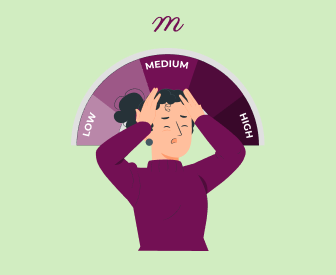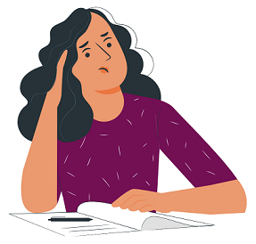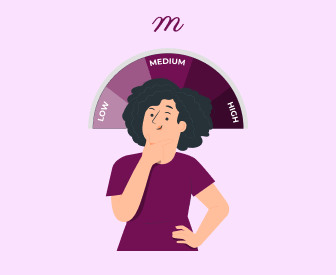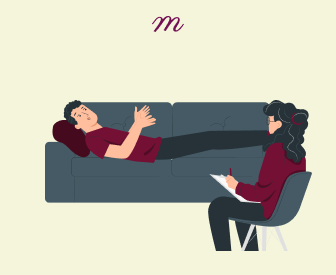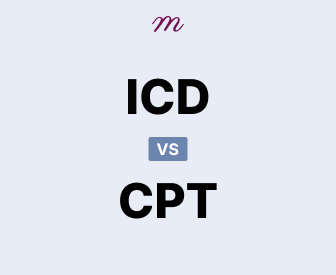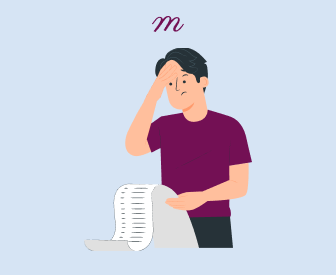Have your progress notes written for you automatically
Depression assessment tools have come a long way since the early days of psychiatry, and one that has stood the test of time is the Montgomery-Åsberg Depression Rating Scale (MADRS). As therapists, having reliable measurement tools in our clinical arsenal is not only helpful but essential for tracking progress, making treatment decisions, and communicating effectively with colleagues and patients.
Why I Started Using MADRS
I had a client—Jen (not her real name)—who wasn’t responding to therapy the way I expected. My supervisor suggested trying the MADRS to get a clearer picture of what was happening. I was like, “Great, another form to fill out,” but I was wrong.
The MADRS actually showed that while Jen’s sadness was improving, her concentration issues and inner tension were barely budging. This completely changed our approach, and within a month, she started making real progress.
This got me curious about where this scale came from. Turns out, Montgomery and Åsberg created it back in 1979 specifically because they felt the existing scales (like Hamilton’s) weren’t sensitive enough to measure changes during treatment.
They started with a massive 65-item assessment on 106 patients (a mix of English and Swedish people) and narrowed it down to the 10 items that were most responsive to treatment changes. That’s what makes MADRS different – it was built from the ground up to detect when someone’s getting better or worse.
The 10 MADRS Items: What We’re Actually Measuring
The MADRS is designed for adults only (+18), and it’s administered through a clinical interview. This means that you can use your clinical judgment to achieve a meaningful assessment. The Montgomery-Åsberg Depression Rating Scale focuses on 10 core symptoms of depression:
- Apparent Sadness: The visible manifestations of depression observed in the patient’s facial expressions, posture, and speech
- Reported Sadness: The patient’s subjective experience of depression, regardless of outward appearance
- Inner Tension: Feelings of ill-defined discomfort, edginess, or mental tension that may escalate to panic or anguish
- Reduced Sleep: Changes in sleep patterns compared to the patient’s normal experience
- Reduced Appetite: Loss of desire for food or the need to force oneself to eat
- Concentration Difficulties: Problems collecting one’s thoughts that may impair daily functioning
- Lassitude: Difficulty initiating activities or general slowness in performing everyday tasks
- Inability to Feel: Reduced interest in surroundings or decreased capacity to experience pleasure or appropriate emotions
- Pessimistic Thoughts: Feelings of guilt, inferiority, self-reproach, or hopelessness
- Suicidal Thoughts: Thoughts that life isn’t worth living, ranging from passive death wishes to active suicide plans
Each item is scored on a 0-6 scale, with defined anchor points at 0, 2, 4, and 6. Intermediate scores (1, 3, 5) represent gradations between these defined points. The total score ranges from 0 to 60, with higher scores indicating more severe depression.
How to Use the Montgomery-Åsberg Depression Rating Scale in Sessions
I’ll be honest, the first few times I administered the MADRS, it felt awkward. I had “Mark” come in last fall—construction worker, mid-30s, going through a divorce, and recently diagnosed with major depressive disorder. He slouched in my office chair, barely able to make eye contact.
When I started with “I’d like to ask you some specific questions about your mood,” he just nodded. “Sure.” The MADRS question about sadness was telling—I observed him more than relied on his answers. When asked directly how he felt, he said “Fine,” but his voice was flat, his shoulders hunched. I marked him at a 4, noting “Patient appears distinctly sad and downcast, minimal facial expression variation during 50-min session.”
For the question about sleep, he actually opened up more. “I’m up at 3am most nights. Stare at the ceiling. Sometimes I don’t even try to sleep anymore. Last night I slept two hours.” Clear 6 on that item.
The most revealing moment came with the “concentration difficulties” question. He described forgetting basic things at work as something that had never happened before. “Nearly lost my job last week when I messed up an order. My colleague thinks I’m struggling, but I’m not sure.” That’s when I noticed he was tearing up.
In a later session, his total score had only dropped from 55 to 53 despite starting meds and psychological treatment. I was concerned, but when I mentioned this, he actually seemed relieved. “So it’s not just in my head. There’s something actually wrong.” That validation was motivating for him, and we were able to steer in the right direction.
Pro tip I learned with Mark: For concrete thinkers, using specific examples helps. Not “Have you lost interest in things you used to enjoy?” but “You mentioned you used to fish on weekends—have you gone lately? How was it compared to before?”
A Deep Dive into MADRS Features
What MADRS Misses
No assessment tool catches everything. Unlike the Hamilton scale, MADRS doesn’t cover:
- Sexual functioning (which can be a huge issue with depression and meds)
- Time-of-day symptom changes
- Feelings of unreality
- Various physical symptoms
I had a client with chronic pain whose depression scores on other scales were inflated because of their physical symptoms. MADRS gave us a clearer picture of their actual mood.
It is also very important to note that the scale does not provide a diagnosis of major depressive disorder, but rather helps to assess the severity of depressive symptoms.
Does It Actually Work? (The Research Part)
Research on the Montgomery-Åsberg Depression Rating Scale (MADRS) highlights its effectiveness across diverse groups. Studies confirm its accuracy in identifying depression, both in general populations and psychiatric patients. What’s particularly striking is how MADRS compares to other well-known depression assessment tools—in some cases, it even outperforms classics like the Hamilton Depression Rating Scale in measuring treatment progress.
One of the most valuable aspects of MADRS is its reliability. Unlike some assessment tools that produce varying results depending on the clinician, MADRS has shown strong consistency across different healthcare providers. This means that no matter who administers it, the findings tend to be similar—ensuring more dependable assessments.
Its reliability extends to specialized populations as well. For instance, in patients with Alzheimer’s disease, MADRS has been found to correlate strongly with dementia-specific depression scales. This makes it a versatile tool that clinicians can trust when assessing and tracking depression in different patient groups.
For mental health professionals, having an assessment tool that is both accurate and consistent is crucial. MADRS provides a structured way to measure progress, helping clinicians make more informed treatment decisions with confidence.
When I Find It Most Useful
After using MADRS for a while, I’ve found it particularly helpful in these situations:
- Treatment monitoring: I use it every 3–4 sessions with clients on medication or trying new therapy approaches. The concentration and lassitude items often improve first, in my experience.
- Insurance justification: Having objective scores showing improvement (or lack thereof) has saved me tons of time when justifying continued treatment.
- Clients with physical health issues: Since MADRS focuses less on physical symptoms, it gives a clearer picture of mood in clients with chronic pain, autoimmune conditions, etc.
- Clients who struggle to express themselves: The structured format helps some clients articulate what they’re experiencing when open-ended questions overwhelm them.
Making Scores Meaningful to Clients
This might be the most important part! Numbers alone does not help people feel better. I’ve started sharing MADRS results with clients as part of our work together:
“Your score dropped from 50 to 36 since last month. That’s still in the depression range, but it’s real progress. What changes have you noticed?”
Or sometimes: “I notice your score on inner tension is still high, but your sadness has improved a lot. Does that match how you’ve been feeling?”
These conversations have led to some breakthrough moments. One client felt so relieved when I showed her that her scores had improved, saying, “I thought I was still as bad as when I started.” The objective measure helped her recognize her progress when her depression was still coloring her self-perception.
Final Thoughts: The MADRS in Context
After working with depression scales for years, I’ve come to realize the MADRS is incredibly useful, but it’s definitely not the whole story. Depression is just too complicated for any single scale to capture completely. What I appreciate about the MADRS is how it helps track the core symptoms when seeing someone over multiple sessions.
I have noticed that the most helpful approach is combining what the MADRS tells me with my own clinical experience and—this is crucial—actually listening to what my patients say. The numbers help, sure, but they only make sense when I consider the unique person I’m working with. That’s why I believe so strongly in the relationship aspect of therapy. It’s through our conversations that those scores become meaningful information rather than just data points. Understanding both the strengths and limitations of tools like the MADRS helps me use them effectively without letting them dictate how I approach someone’s care.


